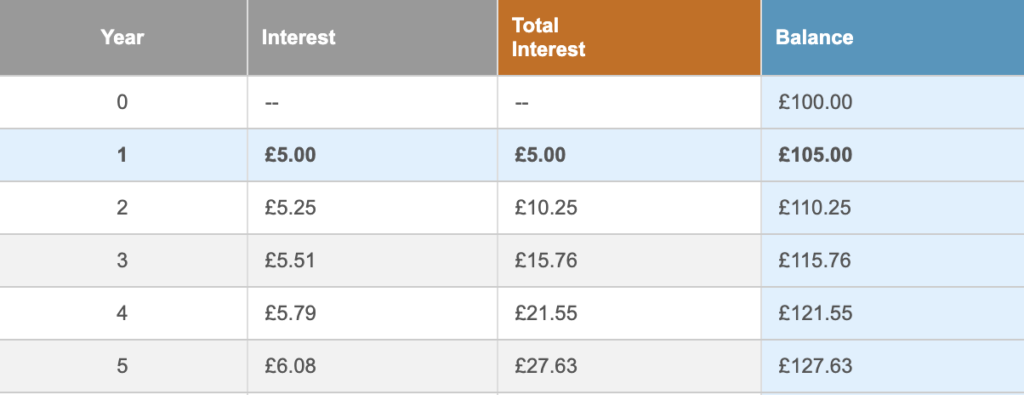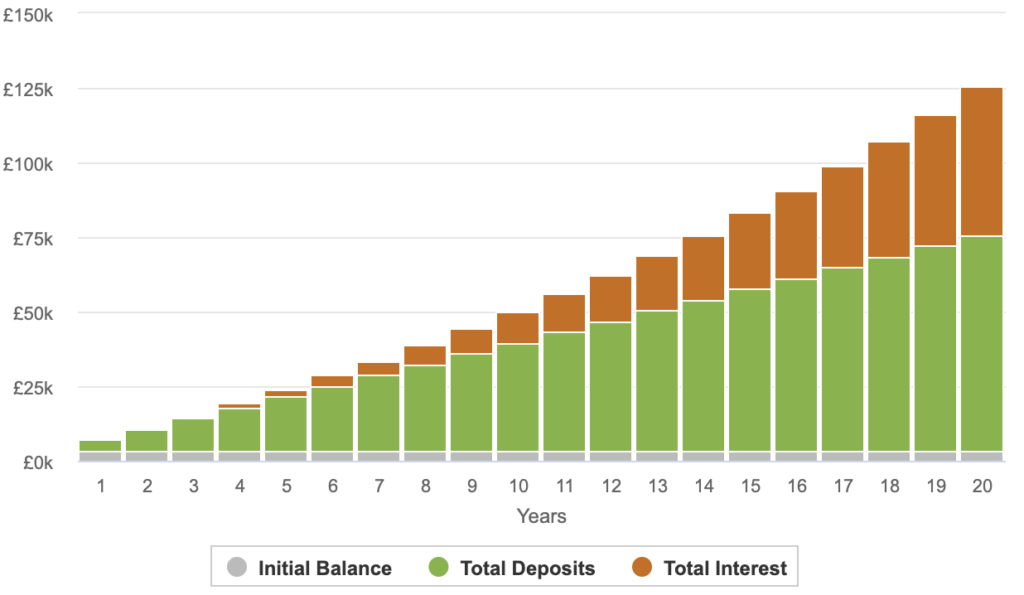Like most things it comes down to how much work you put in, and how early you start. Much like the bird who catches the worm; the earlier you start the better. Follow these 7 steps to be successful on your investing journey, and it should be easier.
How hard is it to be a successful investor?
Investing has some misconceptions about it; it’s too complicated and it’s just gambling.
Well, it doesn’t have to be complicated, all you have to do is follow some simple rules and the rest should follow. It’s all about taking a calculated amount of risk, and purposefully not gambling.
I’m going to be using some terms that I’ve covered in a previous post so if you’re new to investing then I would suggest you start here.
Let’s crack on.
Step 1 – Budget
Ask yourself these two questions:
A. How much money do you take home after tax each month?
B. What is your essential monthly expenditure?
If you aren’t sure what the answer is, then please, before reading any further, find out. It is vital you know what you are earning and spending each month.
If you know the answers to A and B, then start subtracting B from A. This will leave you with something called ‘Discretionary income’, sometimes confused with ‘Disposable income’.
It is the amount of money you have left over after your essential expenses each month.
Here’s an example:
If you earn 30K a year gross, after tax and NI you will take home net approx. £2K per month (pm).
Now let’s say you spend £1700pm on all your bills, food, leisure activities etc.
That leaves you with £300 of discretionary income; money that you haven’t used during the month.
We have just determined how much can you invest! Easy right?
![]() That discretionary income is surplus to requirements and you can make better use of it rather than spending it on takeaways
That discretionary income is surplus to requirements and you can make better use of it rather than spending it on takeaways
Step 1 complete.
Step 2 – Emergency fund
It’s very important to make sure you have an emergency fund.
Why have an emergency fund? Why not just invest all of my money?
Having an emergency fund is vital in times of need. Your money doesn’t always go up, there could be years when you make a loss. Usually your investments will recover but nobody can tell you how long that might take.
What if you lost your job and couldn’t find another one for a year?
If you take money from your investments in a bad year then you lock in those losses and without giving them a chance to recover.
Also, it’s just easier and quicker to get to if you need it!
I’d suggest you consider something like 6 – 12 times your monthly outgoings, depending on how cautious you are.
If your expenditure is £1,700pm then having £10,200 0r £20,400 in the bank account should be sufficient.
If you have an emergency fund ready, then on to step 3, if not, start saving that spare cash to build one up first before you consider investing.
Step 3 – Risk
Worrying about money can be stressful!
An easy way to help you sleep at night is to ensure that you aren’t taking more risk than you are comfortable with.
Here’s another question:
What asset allocation are you comfortable with?
Allocating more or less of your money to higher risk assets can help diversify your portfolio, it will also reduce or increase your overall risk.
There are many different risk levels for you to choose from each with a different asset allocation.
The following categories will give you an example of risk levels available:
- Cautious – 20%-40% in equities,
- Balanced – 40%-60% in equities
- High – Anything above 70% is towards the higher risk category
This could be broken down further:
- Low risk – roughly 20% in equities
- Low-medium – roughly 40% in equities
- Medium – roughly 60% in equities
- Medium-high – roughly 70% in equities
- High – roughly 80% in equities
- Aggressive – roughly 100% in equities
It is hugely important to select the right level of risk for you. My risk level might be different to yours, Bob down the road might be happy with high risk, his wife Susan might be happy with medium risk. Everyone is different.
Choosing your risk level will largely depend on your life circumstances and when you might need the money you’re investing.
Usually you can take more risk when you are younger because you have more time to smooth out the ups and downs of the markets (volatility). Ride the wave.
A 35 year old investing for retirement could be happy investing in a high risk portfolio for capital growth.
Whereas, a 65 year old investing for retirement may prefer a low risk approach for capital protection.
Everyone is different, but make sure you are happy with your risk level.
Step 4 – Time Horizon
No, it’s nothing to do with the Event Horizon.
Time horizon is when you will need to access the money you’re investing.
Are you investing for retirement in 30 years? Or are you investing for a house deposit in 5 years?
Remember, the more time you have the more risk you can usually tolerate.
If you never plan to access the money and have plenty of savings to meet your needs then you may consider taking a higher risk approach.
Number 1 rule – Do not invest for any less than 5 years. As I mentioned earlier about the ups and downs and riding the wave, 5 years gives you enough time to ride the wave.
If you think you might need the money in the next 5 years, keep in savings!
Step 5 – Where to Invest
You should now have the following:
- Discretionary income
- Emergency fund
- Risk level
- Time horizon
What’s left? It’s the biggy! How are you going to invest?
There are 2 main forms of investing that I have written about before, Active & Passive.
If you want to get into the nitty gritty of investing then I would suggest you start there.
On the flip side, if you want something already built for purpose with global diversification then I would suggest you take a look at the Vanguard LifeStrategy funds.
Vanguard have 5 ready made portfolios with different levels of risk i.e. 20%, 40%, 60%, 80% and 100% equities.
The portfolios have a mix of ETFs and index funds, it is also actively managed where the fund manager may change the investments over time.
Example:
You’ve decided that you are a Medium risk investor after considering your time horizon. You’re happy with about 60% equities. Then you would invest in Vanguard LifeStrategy 60%. You might then check it once a year to see how it’s doing.
Vanguard is a great place to start, and then over time you can start being a bit more active as you learn. You could make your own portfolio of ETFs and index funds if you’d like, or a portfolio of Active investments.
Step 6 – Pick your account
Your investments need to be held somewhere, otherwise they’ll be floating in the Ether.
The main ones you can choose from are:
- Stocks and Shares ISA
- Pension
- General investment account (GIA)
Each have their benefits, which I will go into fully another time, but here is a quick run down.
ISA (Good for the short term or long term):
- Can invest a Max of £20K per tax year (April to April)
- Gains made are tax free
Pension (good for long term):
- Can invest a Max of 100% of relevant earnings up to £40K gross per tax year (April to April) or £3,600 gross if you have no earnings
- You will get tax relief when you put money into a pension.
- When you take money out you could pay income tax.
GIA (good for long term and short term):
- Should only be used when allowances in an ISA and pension are used up.
- All gains and income are liable to tax
I’d start with a Stocks and Shares ISA if you’re investing for the near future. Use a pension if you’re investing for your retirement.
Step 7 – Start early & Compound that Interest
Compound interest is your best friend!
Compound interest is where your money makes money, and then the money you’ve made makes money, and then the money your money has made makes money… and so on.
In numbers it looks like this:
£100 invested makes 5% you now have £105
£105 invested makes 5% you now have £110.25
£110.25 invested makes 5% you now have £115.76

Would you say no to £125,000 in 20 years?
Here is a quick chart showing its effects, it assumes you start with £0 and put in £300pm and grows at 5% each year over 20 years and compounded annually:

I use the calculatorsite to work these figures out – have a play around and see what your future could look like.
And they are my 7 steps to investing.
Remember the more you invest the more of an impact it will make. In the same way the longer your time horizon the more impact it will have.
If you have a particular goal in mind, consider upping your contributions or expanding your time horizon to make sure you get there.
Following these 7 simple steps will put you on the right track to making money. More will gradually come as you experience investing and you’ll learn from your mistakes. Keep at it though and you could be the next Warren Buffett.

